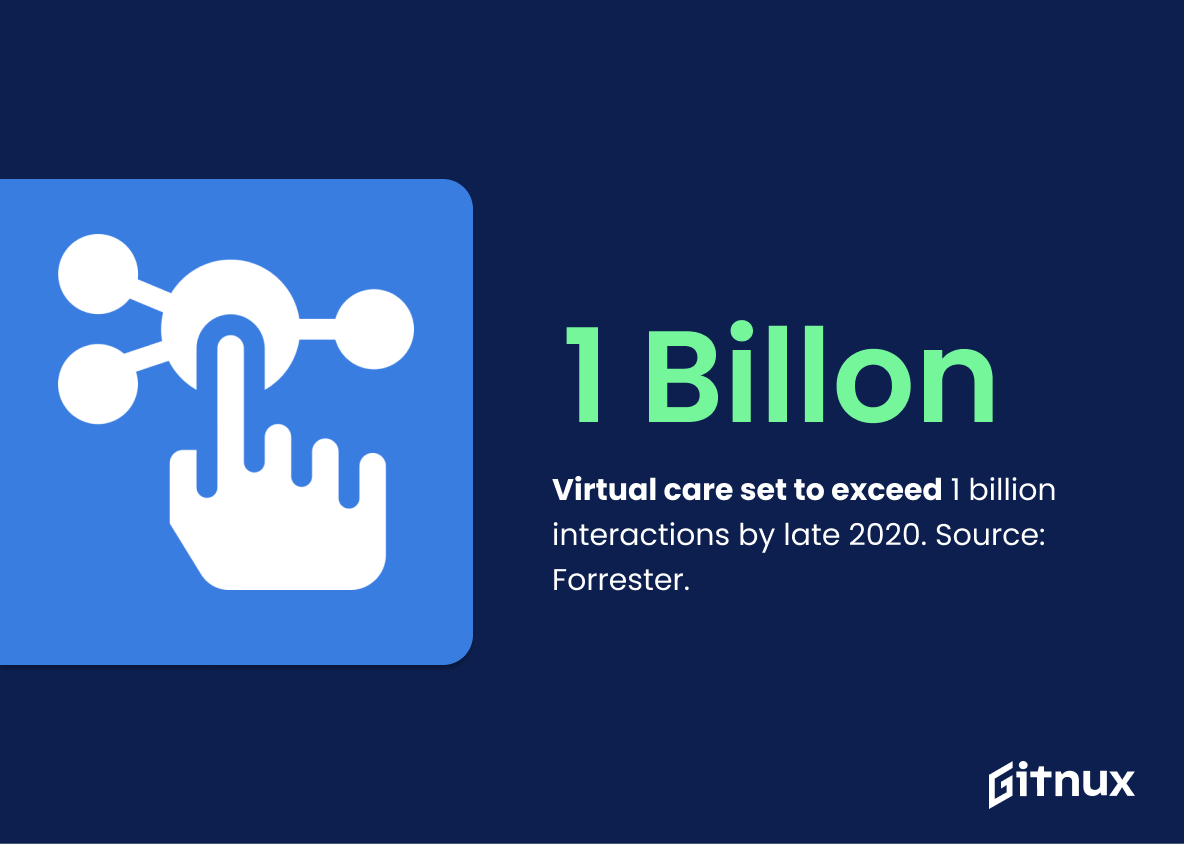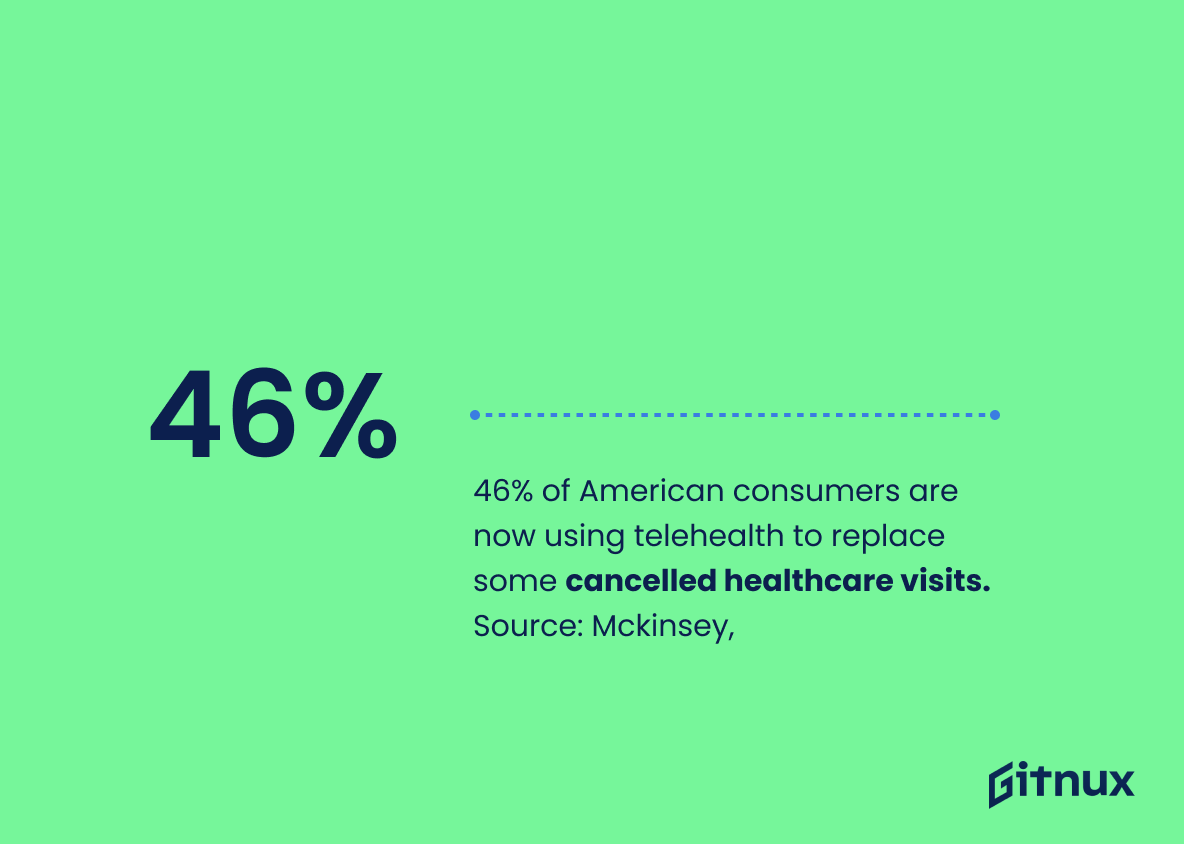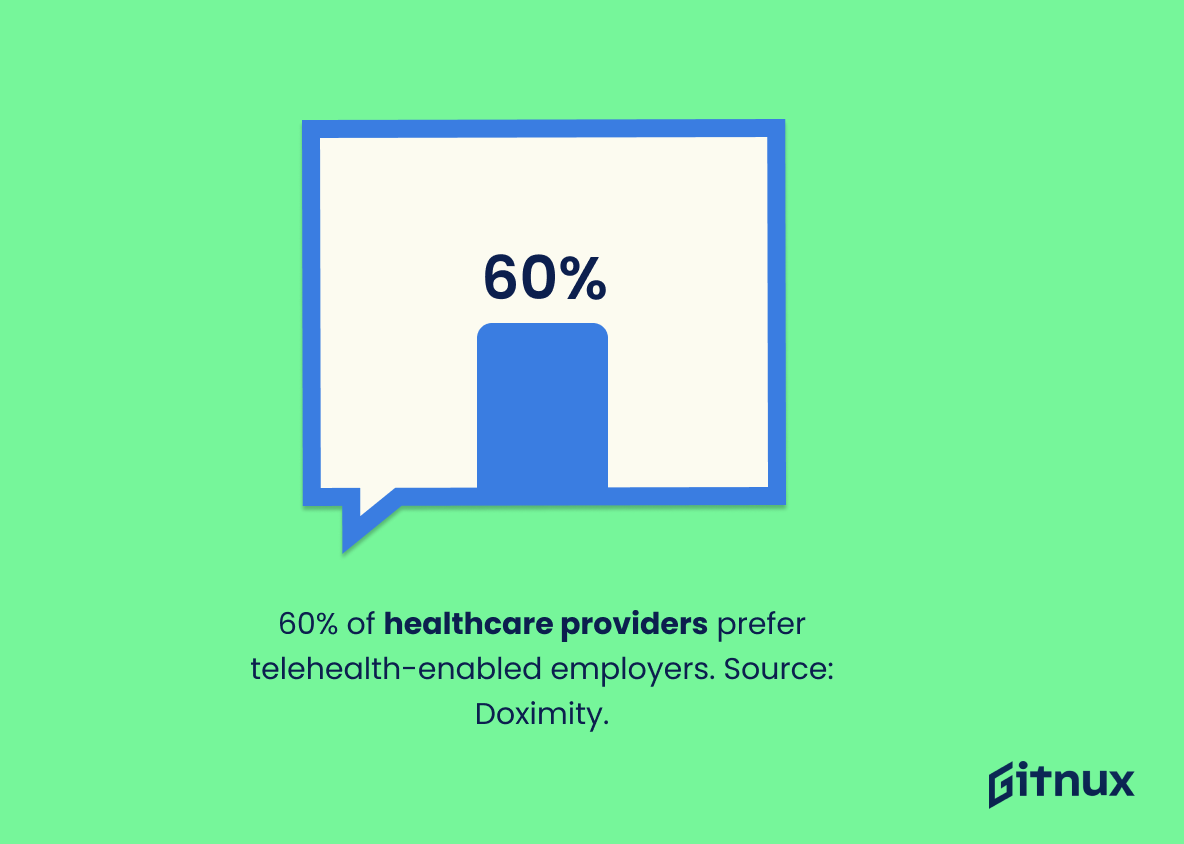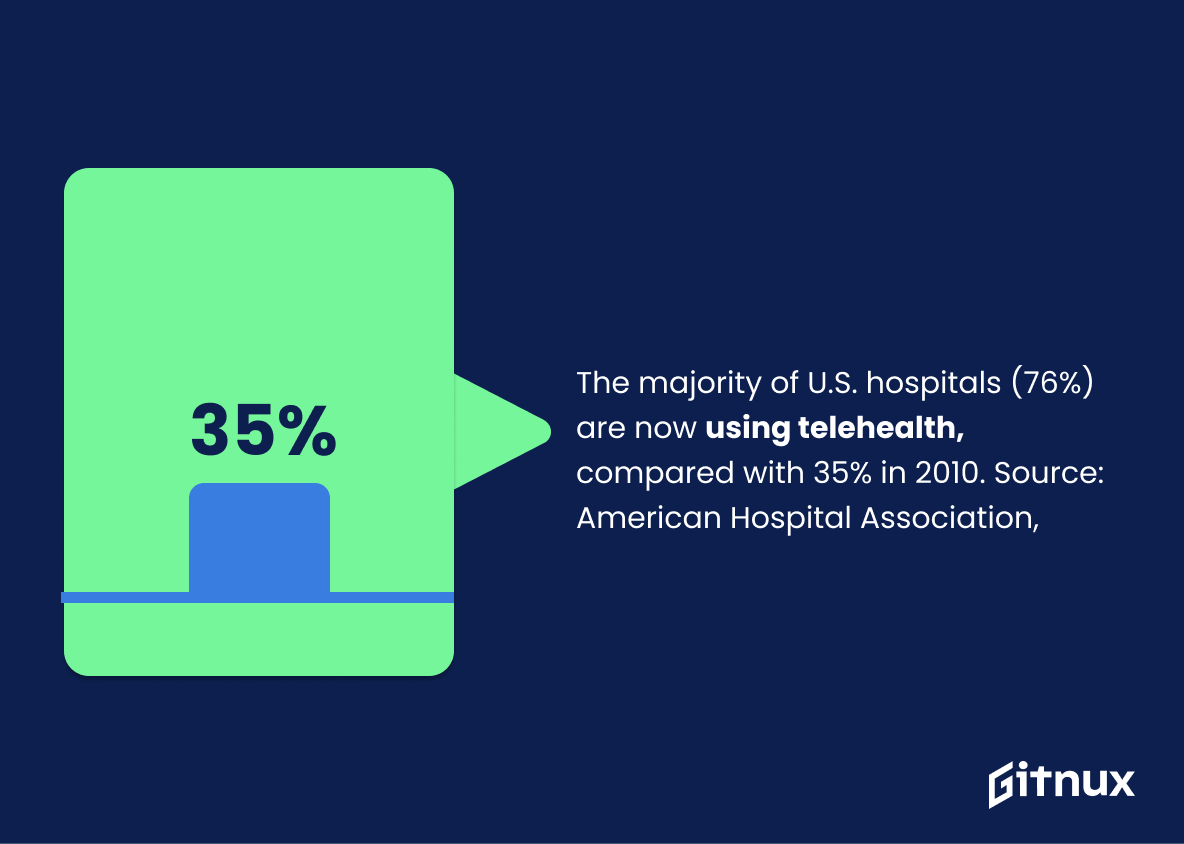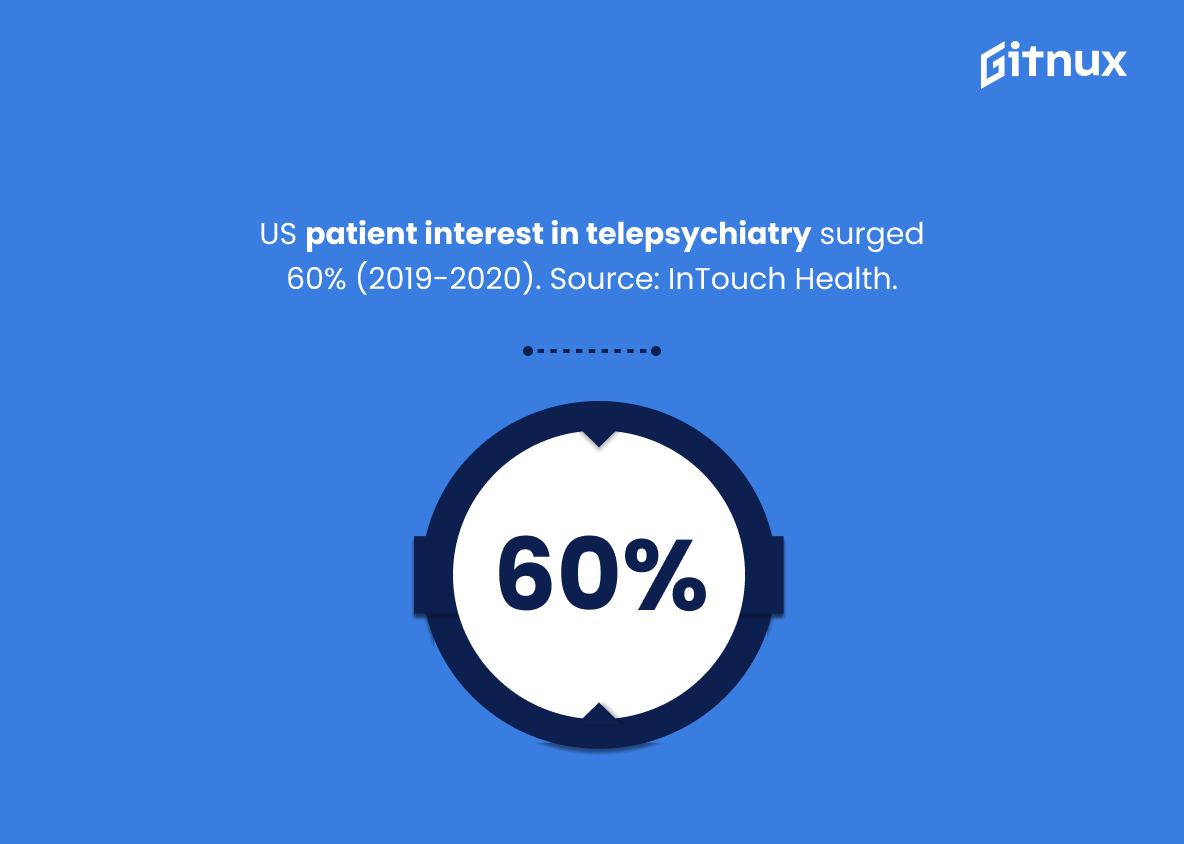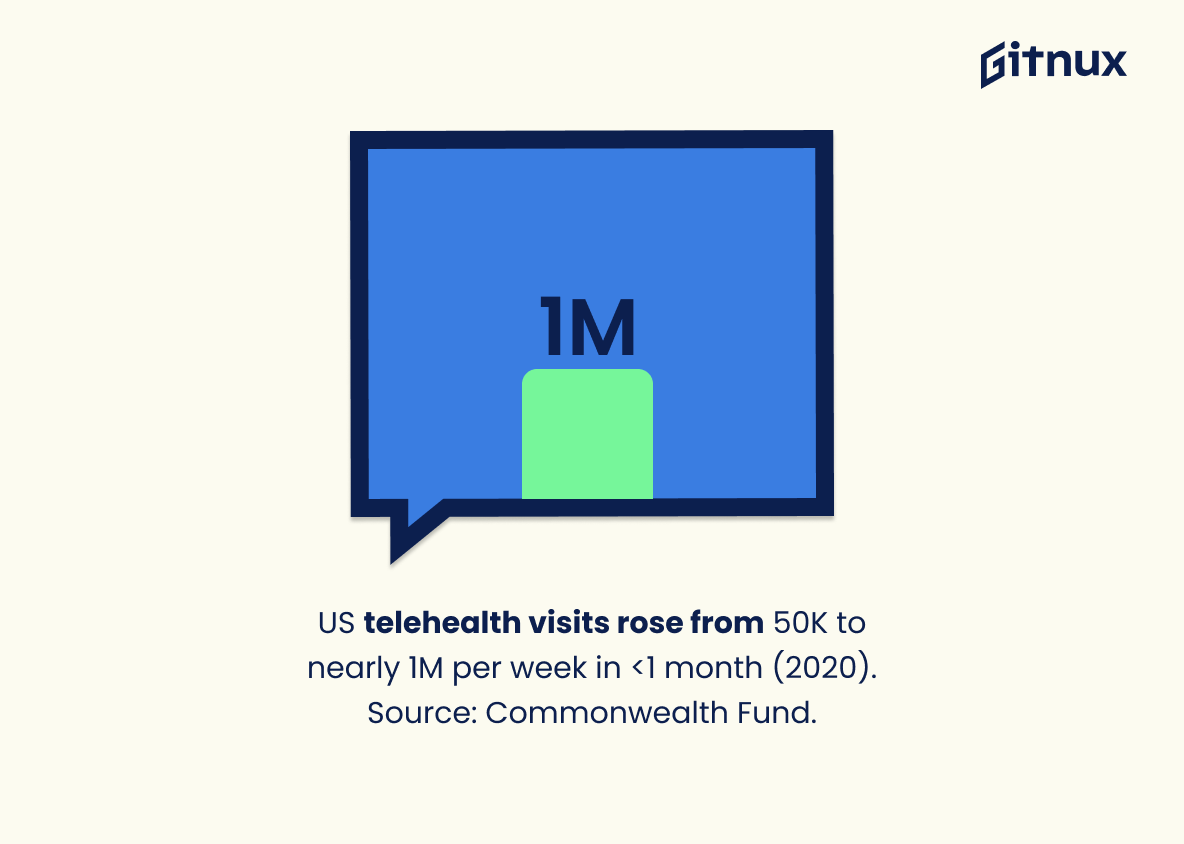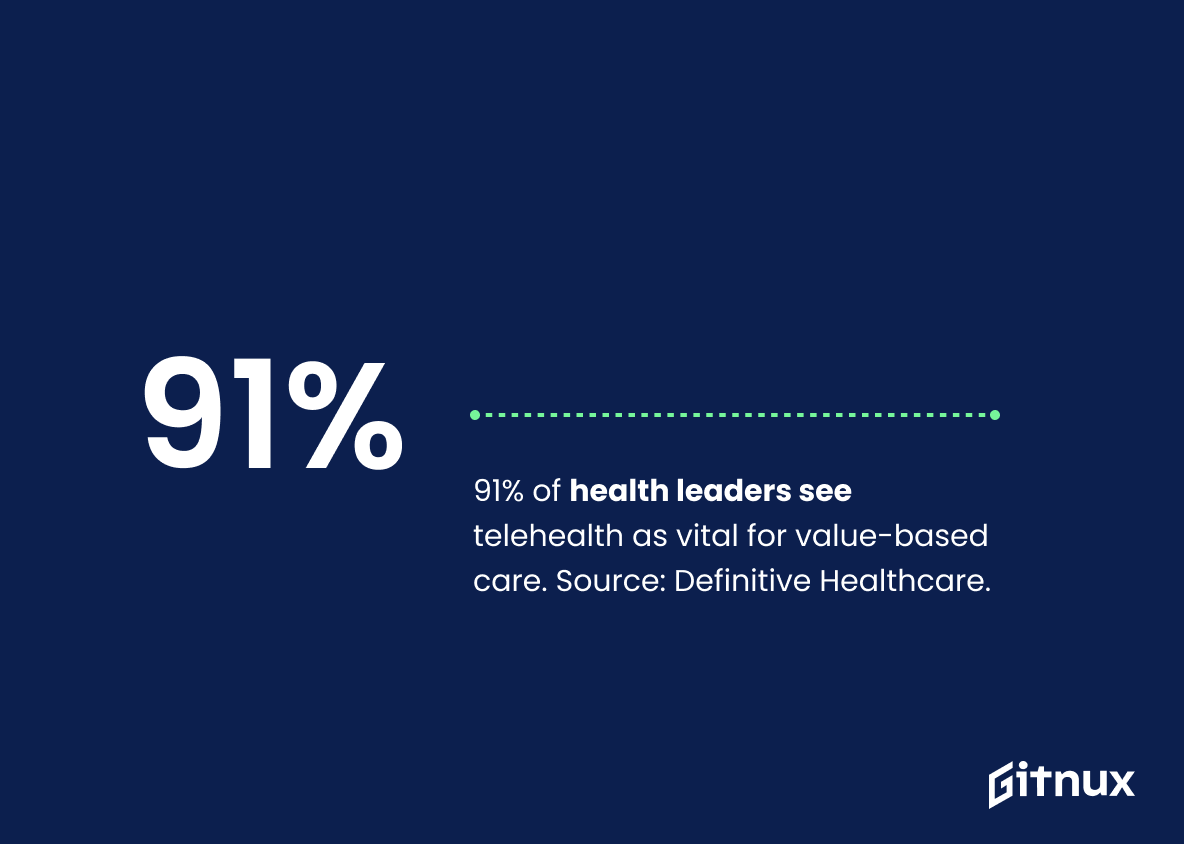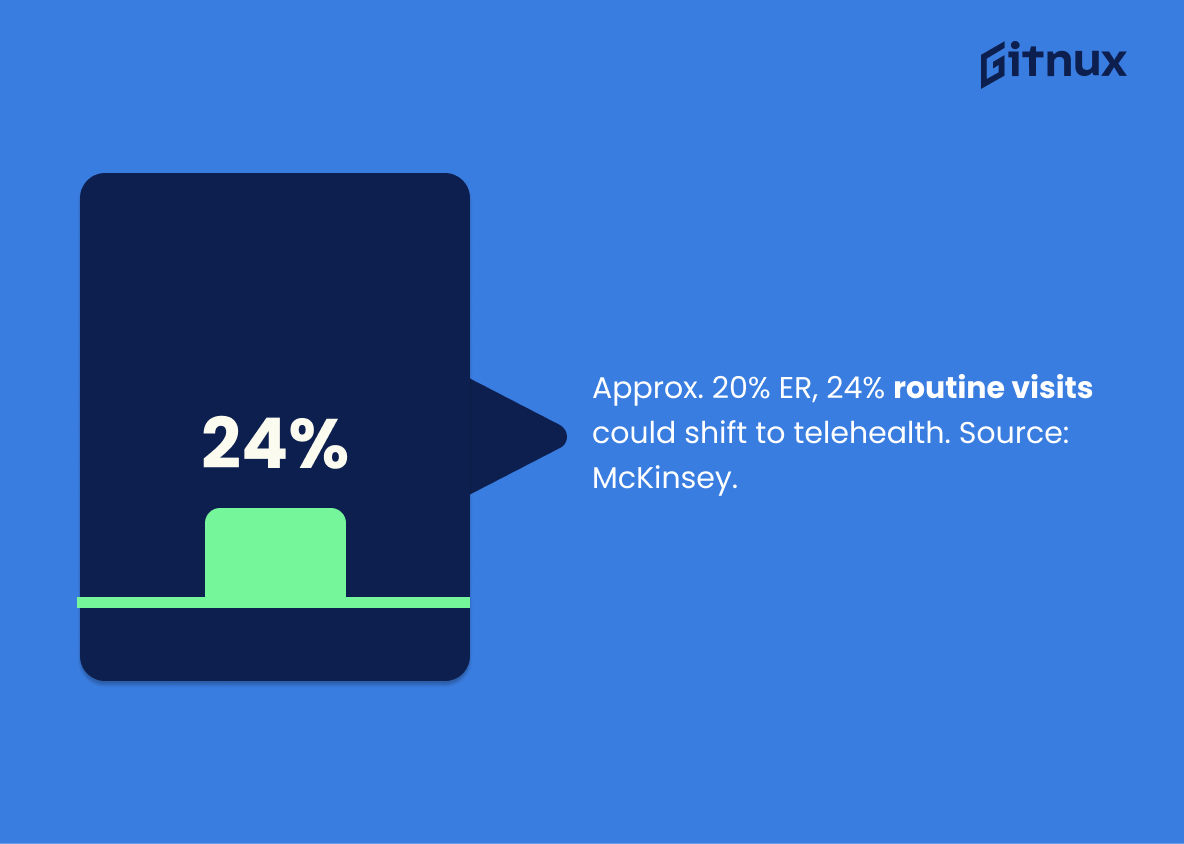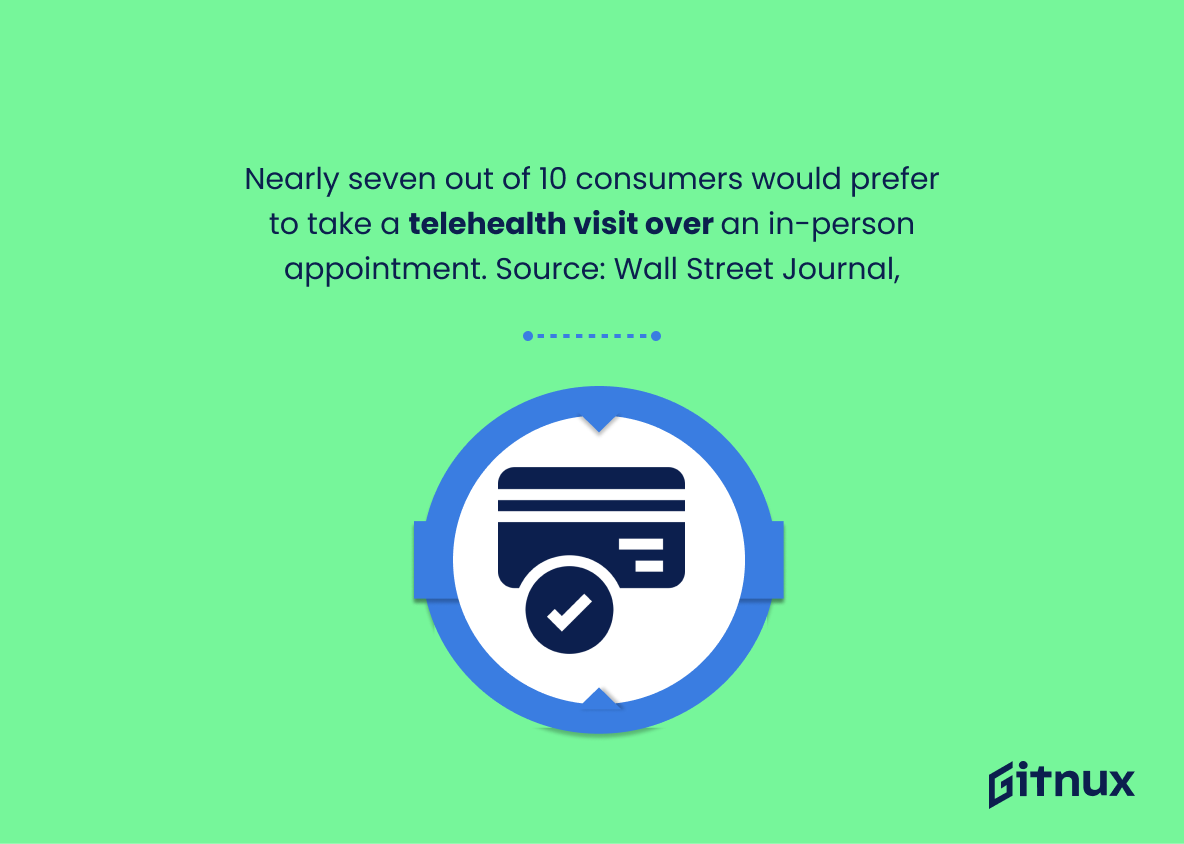In the modern, digitally-driven era, telehealth has not only emerged as an innovative solution but also a lifeline for seamless delivery of healthcare services. As we navigate through the fascinating realm of telehealth, it becomes vital to understand its diverse aspects powered by data and statistics. This blog post aims to shed light on those critical telehealth statistics, presenting a comprehensive overview of how telehealth is reshaping the contours of the healthcare industry. Whether you’re a healthcare professional seeking insights or simply an avid technology enthusiast, these statistics will offer a deep-dive into the progressively evolving landscape of telehealth.
The Latest Telehealth Statistics Unveiled
By the end of March 2020, virtual care interactions are on pace to surpass one billion total by year-end. Source: Forrester,
The vast promise of telehealth comes crashing into view with the startling statistic reported by Forrester, that virtual care interactions appear set to avalanche past the one billion mark by the end of 2020. As we venture further into the realms of telehealth, this illuminating figure not only underscores the sheer magnitude of our digital shift, but elegantly encapsulates the increasing confidence and trust users place in remote healthcare services. As the wheels of telehealth continue to turn, this probability indicates a future where healthcare is not just a physical facility visit, but a feature knitted into the fabric of everyday life – unveiling, for patients and medical professionals alike, an arena of untold digital opportunities.
Telehealth usage increased by 154% during the last week of March 2020 compared to the same period in the previous year. Source: CDC,
Underlining the transformative shift in the healthcare process, the surge in Telehealth usage by a staggering 154% in the last week of March 2020, compared to the same timeframe in the previous year, maps out an emerging landscape. This dramatic uptick, highlighted by the CDC, intriguingly aligns with the onset of the global pandemic, signaling the resourcefulness and adaptability of both healthcare providers and patients in unprecedented situations. Further, this quantum leap not only underscores the vital role of Telehealth in ensuring the continuity of care but also illuminates its soaring acceptance among practitioners and patients, potentially heralding a new era in medicine.
46% of American consumers are now using telehealth to replace some cancelled healthcare visits. Source: Mckinsey,
Offering a clear view into the increasing acceptance and usage of digitally-enabled healthcare, the statistic from McKinsey underlines that nearly half of American consumers are turning towards telehealth methods. This shift is primarily to make up for the healthcare visits that had to be scrubbed off due to unforeseeable reasons. When incorporated into a blog post about Telehealth Statistics, this intriguing fact embarks on a compelling narrative about how telehealth is increasingly becoming a keystone in the American healthcare paradigm. With 46% of consumers pivoting to virtual consultations and visits, we’re noticing a transformative progression in the healthcare industry that encapsulates the transition from traditional to digital platforms. Hence, it paints a vivid picture of the current landscape, highlighting the importance and relevance of telehealth, particularly in a time of growing demand for remote healthcare services.
Prior to COVID-19, telehealth utilization was sparse, with only an 11% consumer adoption rate in 2019. Source: Mckinsey,
Understanding the low consumer adoption rate of telehealth at a mere 11% in 2019, as cited by McKinsey, paints a vivid picture of the landscape before the pandemic hit. It lends perspective to appreciate not just where we currently stand, but also how far we have come since. Within the story of telehealth, this statistic serves as a crucial slider on the scale of progression. More than just a figure, it betrays the then lack of general acceptance, understanding, and possibly accessibility of telehealth services. In the light of COVID-19, as telehealth inevitably became not just an option but a necessity, tracking this growth against the relatively low baseline would unquestionably present an astounding narrative of how quickly adaptation could be triggered when circumstances warrant. With this in view, the 11% forms a key stepping stone in the unfolding trajectory of telehealth.
Telehealth investments reached $4.3 billion in 2020, up around 139% from 2019’s $1.8 billion. Source: Mercom Capital,
Illuminating the acceleration of innovation in the healthcare sphere, the dramatic 139% surge in telehealth investments from 2019’s $1.8 billion to $4.3 billion in 2020 underscores the recognition and rising acceptance of technology-driven solutions in healthcare (according to Mercom Capital). In a world significantly altered by a global pandemic, this statistic paints a vivid picture of the increasing commitment to digital health applications, providing tangible evidence of telehealth’s expanding role in ensuring accessible, efficient healthcare across the globe. It highlights the era of rapid technological transformation and investment enthusiasm we’re experiencing in healthcare, bolstering the blog’s primary focus on telehealth statistics and setting the stage for discussions about future trends and their potential impacts.
43% of physicians reported a high level of comfort using telehealth technology. Source: Deloitte,
Painting a vivid tableau of telehealth’s prominence in the medical industry, proves evidence of current and prospective acceptance from health practitioners. An intriguing tidbit drawn from Deloitte shares that nearly half, precisely 43%, of physicians vouch for a high level of comfort using telehealth technology. This holds considerable weight in underscoring acceptance and adroitness among medical professionals, boding well for the technology’s integration into standard practice. Furthermore, it sparks optimism for the technology’s potential to bridge gaps in care accessibility, by illustrating cultural readiness among important stakeholders. Thus, this statistic ostensibly highpoints the robust in-roads telehealth technology is making into healthcare practice.
60% of healthcare providers reported they are most likely to work for organizations that provide telehealth options. Source: Doximity,
This intriguing 60% figure serves as a potent illustration of the shifting trends in the healthcare industry, significantly pertaining to telehealth. Fetched from a trusted source – Doximity, it signifies a preference for telehealth options among healthcare providers, thus hinting at an impactful future trend. As such, for any organization operating within the healthcare domain, this data should be viewed as a pivotal guiding force shaping recruitment and retention strategies. Furthermore, it signals the gravitation towards digital mediums in delivering healthcare services effectively. If you’re navigating the complex waters of telehealth, such impactful statistical insight can provide valuable guidance, shaping your understanding, and influence decision-making.
By 2025, the global telemedicine market is expected to exceed $130 billion. Source: Grand View Research,
The anticipated surge of the global telemedicine market to over $130 billion by 2025, as conveyed by Grand View Research, vests a significant amount of gravity to the narrative of Telehealth statistics. This estimation of meteoric rise underlines the escalating relevance and prominence of telemedicine in our fast-paced global healthcare spectrum. Furthermore, it provides a stark illumination of the tremendous potential and investment opportunities within this digital health frontier. Therefore, in any statistical discourse pertaining to Telehealth, the inherent financial statistics become unavoidable and highly influential, especially for investors, healthcare professionals, and tech enthusiasts alike.
The majority of U.S. hospitals (76%) are now using telehealth, compared with 35% in 2010. Source: American Hospital Association,
Illuminating a transformative shift in healthcare services, this statistic reveals a rapidly emerging trend of U.S. hospitals gravitating towards telehealth. When you look at the 41% ascent from 2010’s 35% to today’s 76%, it illustrates a remarkable impetus in technology-adoption within the sector, setting a new norm in patient care. This information, courtesy of the American Hospital Association, becomes a cornerstone in understanding the prominence and acceptance of telehealth in the U.S, making it pivotal within a blog post revolving around Telehealth Statistics. Furthermore, it offers a foundation on which to build discussions about the potential future advancements, barriers to adoption, and impacts on patient outcomes of telehealth services.
Telepsychiatry, one subset of telehealth, saw a 60% jump in interest from U.S. patients between 2019 and 2020. Source: InTouch Health,
Delving into the heart of telehealth trends, one cannot overlook the striking surge in Telepsychiatry, a key component of this healthcare modality. Registering a noteworthy 60% leap in interest from U.S. patients between 2019 and 2020, as per InTouch Health data, it effectively highlights the growing stake of digital engagement in mental healthcare. It significantly lays the groundwork for a broader narrative on how telehealth is not only revolutionizing patient convenience but also making strides in previously stigmatized fields such as mental health. This rise signifies the dawn of a promising era, where seeking professional mental help can transcend the barriers of geography and conventional trepidation.
83% of patients surveyed after their first use of telehealth reported they would use this technology again. Source: Software Advice,
The statistic ‘83% of patients surveyed after their first use of telehealth reported they would use this technology again’ unveils a vital turning point in the health sector. Through this single piece of data, it becomes crystal clear that the use of telehealth is not merely a fleeting trend, but a paradigm shift in how individuals perceive and engage with their healthcare options. From the blog post’s standpoint, this statistic not only anchors the discourse on telehealth’s popularity but it also fuels the narrative on sustained user acceptance and satisfaction. Subsequently, these facets collectively form a powerful testament to how compelling and advantageous this technology-driven approach to health care is, thereby redefining the future of patient-doctor interaction.
The number of telehealth visits in the U.S. surged from 50,000 per week to nearly 1 million per week in just under a month in 2020. Source: Commonwealth Fund,
This spectacular increase in telehealth visits in 2020 in the U.S., jumping from 50,000 to almost 1 million each week within a single month, presents a vivid snapshot of the seismic shift in healthcare delivery methods. Peering through the lens of this unrivaled growth provides a strong testament to not only the receptivity but also the integration of telehealth solutions in our contemporaneous health landscape. By uncovering the profound depth of this adoption, the statistic arrives as a striking revelation of telehealth’s pivotal role in addressing healthcare needs amidst unprecedented circumstances. The acceleration comes to light as an emblem of innovation in response to rapid shifts in patient behavior and could be a premonition of the future trajectory of healthcare based on convenience and safety within our homes’ confines.
91% of health leaders believe that telehealth is important for implementing value-based care. Source: Definitive Healthcare,
Highlighting such a high percentage of healthcare leaders recognizing the importance of telehealth is a resounding endorsement for this innovation. Its infusion into a blog post on telehealth statistics reflects the overwhelming confidence in telehealth’s role in value-based care. This potent stat underlines the potential for telehealth services to reshape the healthcare landscape, driving efficiency and improving patient outcomes. Its inclusion amplifies the impact of the blog absorbing the reader’s attention and making them understand the criticality and acceptance of this technology in modern healthcare. The source being Definitive Healthcare, a trusted entity in providing high-quality data, further embraces the credibility of the information, solidifying the argument for telehealth’s applicability in implementing value-based care.
An estimated 20% of all emergency room visits and 24% of routine doctor’s visits and outpatient volume could be delivered virtually via telehealth. Source: Mckinsey,
Emerging from the shadows of McKinsey’s rich repository of research is a startling statistic. A significant slice of all medical appointments—20% of emergency room visits and 24% of routine doctor’s appointments— holds the potential to transition from in-person encounters to remote, virtual consultations through telehealth.
Sharing such tantalizing figures has the power to transform our understanding of healthcare provision. It highlights the convenience and flexibility telehealth brings to patient care, heralding a new era of medical accessibility. By weaving this data into our narrative, we provide a strong, quantifiable backbone to claims about telehealth’s rapidly growing role in healthcare. Not only does it capture the current scenario, but also conveys an incredible future potential for broad adoption of telehealth services – a possibility of optimizing resources and changing the traditional landscape of healthcare services.
These numbers, interestingly, do not merely remain in the realm of theoretical speculation. They have real-world implications. By reducing physical ER visits, we reduce the risk of infections and cross-contaminations, while unburdening overcrowded ERs. And in an outpatient context, they mean not having to take time off work, but rather, just short breaks to connect with healthcare providers.
This statistic, therefore, shines a light on the transformative capabilities of telehealth, making it an integral feature of discussions surrounding telehealth statistics. With a statistic like this, readers can easily imagine the rippling impact as traditional appointments undergo a digital metamorphosis, painting a vivid picture of a healthcare future that’s both highly efficient and patient-friendly.
Nearly seven out of 10 consumers would prefer to take a telehealth visit over an in-person appointment. Source: Wall Street Journal,
Shedding a brilliant streak of light on the dramatic shift in healthcare preferences, the statistic quoted by Wall Street Journal makes a powerful statement – approximately 70% of consumers now favor telehealth visits over traditional in-person appointments. This realigning of the healthcare compass towards telehealth could ignite a profound dialogue in a blog post about telehealth statistics.
For starters, it accentuates the rising trend of digital health, making telehealth not just an alternative, but potentially the new norm. It underscores the convenience and ease that telehealth services offer to patients, such as no travel time, no waiting rooms, and access from the comfort of their own home.
Moreover, this statistic might act as a wake-up call for healthcare providers to remodel their services around telehealth. It could also steer investors and innovators towards exploring new horizons in the telehealth industry, knowing it has a strong and ever-growing customer preference.
Last but not least, it could shift regulatory bodies’ focus towards the legal, ethical, and quality standards in telehealth, ensuring its conduction is as smooth and effective as possible.
Hence, this robust statistic heralds the rising sun of telehealth, making its discussion in a blog on telehealth statistics not only appropriate but imperative.
Conclusion
In conclusion, the rise of telehealth has been nothing short of extraordinary and its transformational power is clear and apparent from the numbers. The present accessibility and adoption of telehealth services show a promising paradigm shift in healthcare delivery. These vital telehealth statistics are not just numbers, but portray the reality of how technology is remaking patient care and addressing healthcare accessibility issues. As we continue to navigate through this highly digital era, we can anticipate ongoing advancements and growth in the telehealth industry. This blog post offers a glimpse at the digital transformation of healthcare and underlines the significance of telehealth. No longer an emerging trend, telehealth is here to stay and will fundamentally reshape patient services for years to come.
References
0. – https://www.www2.deloitte.com
1. – https://www.www.grandviewresearch.com
2. – https://www.www.intouchhealth.com
3. – https://www.www.softwareadvice.com
4. – https://www.www.wsj.com
5. – https://www.www.commonwealthfund.org
6. – https://www.go.forrester.com
7. – https://www.www.definitivehc.com
8. – https://www.www.aha.org
9. – https://www.www.mckinsey.com
10. – https://www.www.cdc.gov
11. – https://www.blog.doximity.com
12. – https://www.mercomcapital.com
